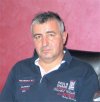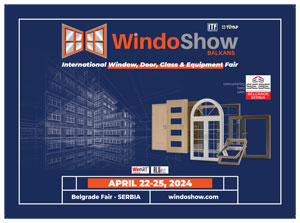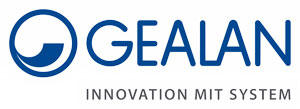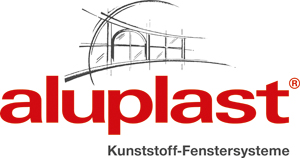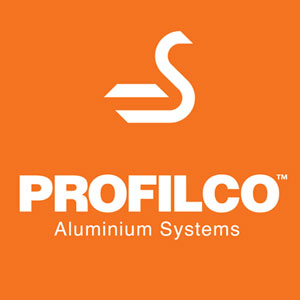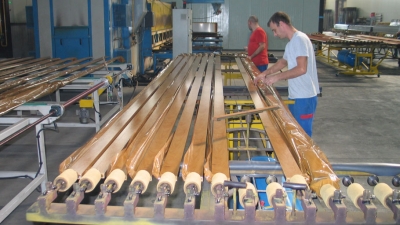Long live the glass facade
Heinsberg. Super Spacer® was launched onto the market over 28 years ago. The insulating properties of the flexible spacers made of silicone foam are undisputed. A view of the past projects also proves that they score highly in terms of their service lives.
Structural integrity still intact after decades
Glass façades and large glass surfaces on the exterior walls of buildings are evergreens in modern architecture, and they permit interplay with light and nature in a manner no other building material can. In an initial experimental phase, the main focus shall be upon constantly shifting the boundaries of what is feasible. Unusual façade and glass constructions with curved or large-format insulated glass sections in particular are often black-box projects", explains Joachim Stoss, Managing Director of Edgetech Europe GmbH in Heinsberg. “A lot of experimentation and testing is performed in advance.” In our special spacers’ section, this usually means manual processing due to the individual glass shapes and different bending radii involved. It goes without saying that this must be performed whilst applying high levels of precision in order to ensure a clean and hermetically sealed edge seal even after several years have passed."
Nowadays the focus is increasingly upon questions of the products’ service life and the optimization and maintenance of the structural integrity of glass structures. The flexible Super Spacers® have repeatedly proved their resistance to climatic loads and mechanical stresses in shear stress tests as well as in the Hurricane simulator. "Due to the elastic material, the edge seal becomes flexible, i.e. the spacer cushions the pressure and the risk of glass fracture is significantly reduced", explains Christoph Rubel, technology specialist of the Heinsberg-based company.
Permanently weatherproof in the far north
The old Moscow shopping centre Gostiny Dvor is, alongside the legendary department store GUM, the largest building complex in the historical shopping and commercial district of Kitai-Gorod. From the end of the eighteenth century onwards the buildings originally dating from the 1590s were replaced by a complex in a Neoclassical style, designed by Giacomo Quarenghi, who was the favorite architect of Catherine the Great. After a lot of reconstruction work was performed over the centuries, Gostiny Dvor restored its present form in the 1990s with a large self-supporting glass roof in Europe, which was the largest at that time, covering the 12,000 square metre inner courtyard. With its arcades, the spectacular free-standing staircase and the imposing porticoes, it is now one of the most popular event locations in Moscow.
The glass roof has an inclination of 1° in the centre, and only 7° on the sides. In a region where heavy snowfalls can occur between October and March, a creative solution therefore had to be found for the dangers caused by excessively high snow loads. The EGLAS produced by Glassolutions Saint Gobain, that was developed in Finland in 1986, enables the electronically controlled emission of radiant heat, the glass surface temperatures range from 20°C up to a maximum of 65°C. In the event of a reduced power density, the glass panes prevent the formation of condensation. In the event of high power densities starting at 350 Watt/m2, they are used to melt the snow. The insulating glass units for the huge glass roof were fitted with Super Spacer® spacers. Christoph Rubel explains the importance of the silicone structural foam for the structural integrity of the roof: “Due to the elastic material used Super Spacers® have a shape memory. As a result of this the entire edge seal becomes quasi-elastic. It absorbs loads generated by thermal, barometric or other dynamic changes and returns to its original shape when the load decreases again. The edge seal is therefore significantly less stressed than in the case of a rigid or even a thermoplastic spacer. Less stress upon the edge seal results in improved tightness and longevity of the glass units.” Until now there has not been a single complaint due to thermal glass breakage or loss of function of individual elements of the glass roof.
Wave-shaped facade for the Hotel Wagram
Façades with curved glass elements are on the rise. One of the most eye-catching projects of the decade from 2000 to 2009, and also one of the first of its kind in Europe, was the Hotel Wagram in Paris. The wave-shaped façade was designed by the Christian de Portzamparc studio, and was constructed in 2009 by the façades specialist Seele. At eye level for the passers-by, straight glass rows, made of windows that are 2 x 4.3 metres thick, run along the ground floor that are designed with the Super Spacer® TriSealTM Premium Plus in the area of the edge seal and with a silicone seal on the vertical pane joints. For panes of this size it was important that the profile design is capable of absorbing the movements of the upper floors. In addition, the edge seal with the flexible spacer in the insulating glass had to absorb the thermal and dynamic loads of the glass panes that had become stiff through the bending process, and moreover, together with the silicone sealant, ensure the longevity of such valuable façade elements. Curved double-glazed insulated windows form the characteristic waves in front of the hotel rooms on the upper floors. The elements are 2.60 meters high and up to 4.30 meters wide and are manufactured with 11 different radii, ranging from 900 to 1,100 millimetres. Christoph Rubel on the special challenges for the all parties involved in the project: "Due to the bending of the glass, the surface tension is no longer evenly distributed across the individual panes, at the same time the stiffness is higher than in the case of flat glass. If mechanical loads, such as climate stresses or winds, act on the curved panes from the outside, they thus stress the edge seal to a much greater degree than plane glass. The glass type and thickness, the age and weather-resistant secondary sealants and façade adhesives as well as an elastic spacer interact together to ensure the longevity of the entire construction.
Storm-tested in Canada
In the Canadian city of Edmonton, extreme climatic conditions also occasionally prevail with temperatures as low as minus 40 degrees Celsius, heavy snowfall and severe winter storms. Due to the high relative humidity in the hospital environment, the light-filled, airy glass atrium of the Royal Alexandra Hospital, which connects two older building wings with one another, was therefore a real challenge back in 1992. The relative humidity in the hospital is deliberately kept at around 50% in order to reduce the risk of infections. Without sufficient heat insulation, condensation water forms on the window panes even when the humidity is relatively low, as soon as the outside temperatures approach freezing point. The avoidance of condensation on the glass façade that measures approximately 15,200 square metres was therefore a top priority. After evaluating the various technical options, the decision was made in favour of Super Spacer® as the spacer. More than 13,000 metres were processed and to this day no single glass element has had to be exchanged, no condensation ever formed on the windows either. An additional advantage was the flexible edge seal, which reduces the pressure load due to high snow and wind loads as well as temperature fluctuations. Joachim Stoss explains: “In 1992 the Royal Alexandra Hospital was a real pilot project for all the parties involved. Our spacer made of structural foam had after all only been launched on to the market a few years previously. We were therefore all the more delighted that Super Spacer® spacers were requested in the tendering process for the construction of a further building complex in 2005. We can only thank them for the trust they placed in us.”
About Edgtech Europe GmbH
Edgetech’s Super Spacer® flexible foam-based spacer systems act as energy-efficient warm edge spacers in insulating glass windows. They significantly reduce energy loss to the outside, largely prevent condensation and also contribute to the lifespan of a window. Worldwide, more than 300 million metres of them on average are sold annually in over 90 countries.
Edgetech Europe GmbH, located in Heinsberg Germany, is a fully-owned subsidiary of Quanex Building Products Corporation, a leading global provider of energy-efficient components such as window and door profile systems, flexible insulating-glass spacers, edge seals for photovoltaic modules, wooden floors and ceiling profiles, as well as window and door grilles, with its head offices in Houston, Texas. Based on turnover Edgetech/Quanex is the world‘s largest manufacturer of spacers. Edgetech Europe GmbH is a sales location for the markets in continental Europe and one of the three worldwide Edgetech production plants, with a total of 450 employees and 16 extruders. You can obtain additional information about the



